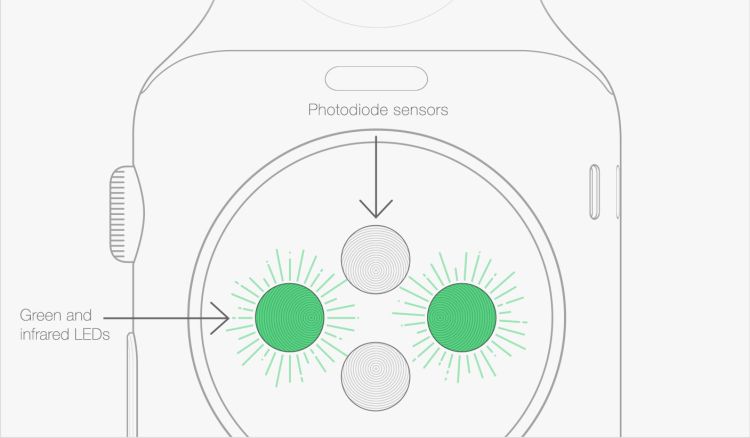Heartbeat sensors have been built into smartwatches and fitness trackers for some time now, but their accuracy has been questionable — the results often vary widely.
The biometric sensors in the Apple Watch were originally billed to be clinically accurate, but Apple reportedly pulled back from using the sensors for more complex measurements like blood oxygen levels during the run-up to the launch because of accuracy concerns.
A simple test seems to suggest that the Watch might be very accurate in measuring heart rate, at least.
An engineer at a plotting instrument firm has done a close comparison of the heart rate monitoring in the Apple Watch to that of a highly accurate dedicated heart monitor, the Mio 2, which gives EKG-quality results from a wrist-worn device.
The engineer, SonoPlot cofounder Brad Larson, used the two devices to measure his own heartbeat at the same time, then plotted the results on a graph.
Here’s the graph:
Extracted the raw Apple Watch HealthKit heartrate samples after a run and compared it to an HR monitor I had on: pic.twitter.com/2Ycj49Ctjt
— Brad Larson (@bradlarson) May 7, 2015
As you can see, the Watch results track closely with the Mio 2’s. If we believe in the accuracy of the Mio 2 (and it’s proven out in scientific studies), the results suggest that the Apple Watch’s results are also highly accurate. That the two devices recorded the same results seems to validate the results themselves.
Interestingly, the two devices arrive at their results using different sensor technologies. The Apple Watch uses green light and infrared light sensors, while the Mio 2 uses an electro-optical sensor.
The Apple Watch uses two green LED lights and two light‑sensitive photodiodes to detect the amount of blood flowing through veins in the wrist. The LED lights flash pulses of light down through the skin hundreds of times per second, and the light is absorbed by the blood cells.
At the second when the heart beats, a greater amount of blood flows through the vein under the sensor, so more of the green light emitted by the sensor is absorbed. Between heartbeats, less green light is absorbed. By calculating absorption levels in small time intervals, the Watch can extrapolate the number of beats per minute.
A teardown of the Apple Watch by iFixit revealed that the device also contains the sensors needed to measure blood oxygen levels, not just heart rate.
Apple reportedly seriously cut back the biometric functions of the watch because of doubts about the accuracy of the measurements. The company believes that arm hair, sweat, and dirt could prevent the infrared light sensors on the back of the Watch from accurately measuring blood oxygen levels.


